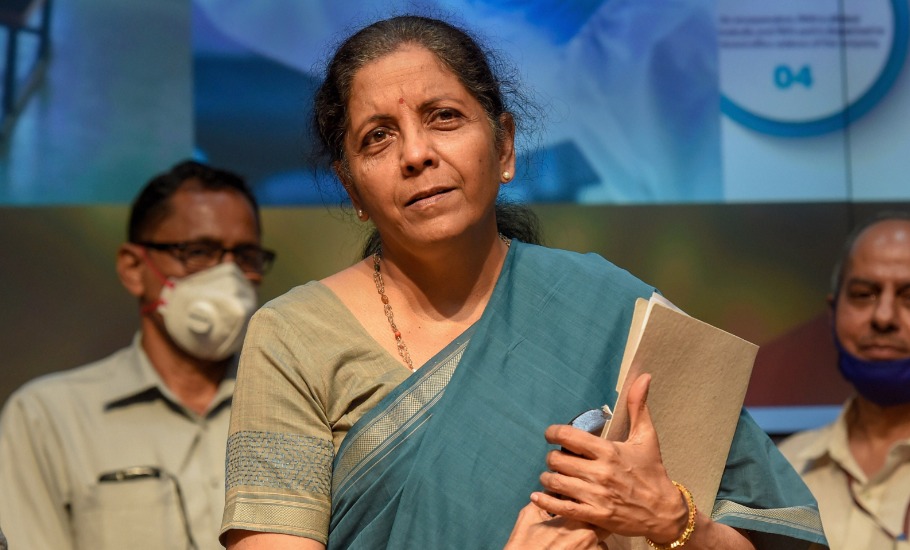
11 jargons help decode Centre’s National Monetisation Policy

The Centre on Monday (August 23) announced the National Monetisation Policy (NMP) with Finance Minister Nirmala Sitharaman revealing a list of assets that would be sold over the next four years as part of the NDA government’s disinvestment policy. But the jargon-laden policy document might be quite a mind-boggler for the uninitiated. Here’s is a breakdown of a few such terms to help you understand the policy better.
The National Monetisation Policy (NMP) is essentially the innovative fundraising method designed by the central government and the NITI Aayog. Under it, the government plans to raise funds by giving lending rights of certain public assets, mostly under-utilised and brownfield assets, to private investors over a designated period of time. The investors can operate, rebuild and generate profits from these assets. The assets include roads, railway lines, power supply lines, ports and airports among others.
Brownfield Projects are infrastructure projects that are already functioning but are not being utilised fully. They are either underutilised or weak or need modification to function more efficiently. In this case, the investors will be allowed to modify or rebuild infrastructure on their own to make the asset function better. Through this model, while the common people will get better infrastructure, the government will save its money on the redevelopment of the existing projects.
ReIT and InvIT are two major highlights of the NMP. They are essentially financial instruments or the pre-designed ways of handling investments. Real Estate Investment Trusts (ReITs) are the companies that are formed mainly to operate these types of money-making infrastructure. This company is expected to maintain and operate the place that is generating money for both parties.
Also read: Govt to raise $81 billion selling infrastructure assets including airports
Infrastructure Investment Funds (InvITs) are just like mutual funds. Any individual or an institutional investor can buy a small unit of it and earn profits from it. The NMP has introduced InvITs to enable the common people to invest in the national infrastructure and also to provide them great investment opportunities, the report says.
“If public expenditure happens, the revival will be clearly predictable and spill-over effect itself will create a cycle of demand,” Sitharaman said on Monday.
NITI Aayog and Finance Ministry have also created the NMP Dashboard to assess the real-time progress of the NMP. It will be launched in the next few days. The dashboard will enable investors to see the real-time progress on their invested projects through this dashboard. MNREGA has such a functional real-time dashboard for the whole country.
The central government has announced the financial incentives to the states for disinvestment in their assets. Disinvestment or divestment is mainly the selling of a government enterprise to the private sector investor by the respective government to earn some money out of it. The central government has put aside ₹5,000 crore to encourage the divestment by the states. If a state government divests from its public enterprise, the centre will give that state the exact amount as it received from the divestment.
Public-Private Partnership or PPP is the old structure and is already in practice in many places. Mainly, the state and national highways in the country are constructed under PPP where the builder gets the rights to collect toll to get his investment returns back.
De-risked assets are those that are less likely to be making losses. This simply means that the government will sell or give on contract only those infrastructures that have a very small probability of making losses.
The contractual partners or the investor companies will have to maintain certain standards prescribed by the government in the contract. They will have to follow those rules and regulations while operating any of the spaces in NMP.
The Key Performance Indicator (KPI) is the set of standards that the investors will have to maintain while investing in the public infrastructure. Their performance over the years would be gauged on the KPI scale.
Also read: Second wave of COVID will not affect big-ticket reforms: Nirmala Sitharaman
The official government statement says that the NMP will run a co-terminus with the 100 lakh crore-National Infrastructure Pipeline (NIP). It simply means that NMP is a part of the larger plan of the NIP.
This is an interesting feature of the NMP.
Even though the Centre is being accused of selling assets, it has said that the investors have to ‘Handback’ (hand over again) the asset to the government at the end of the contract. This means that ownership of the asset remains with government, always!


